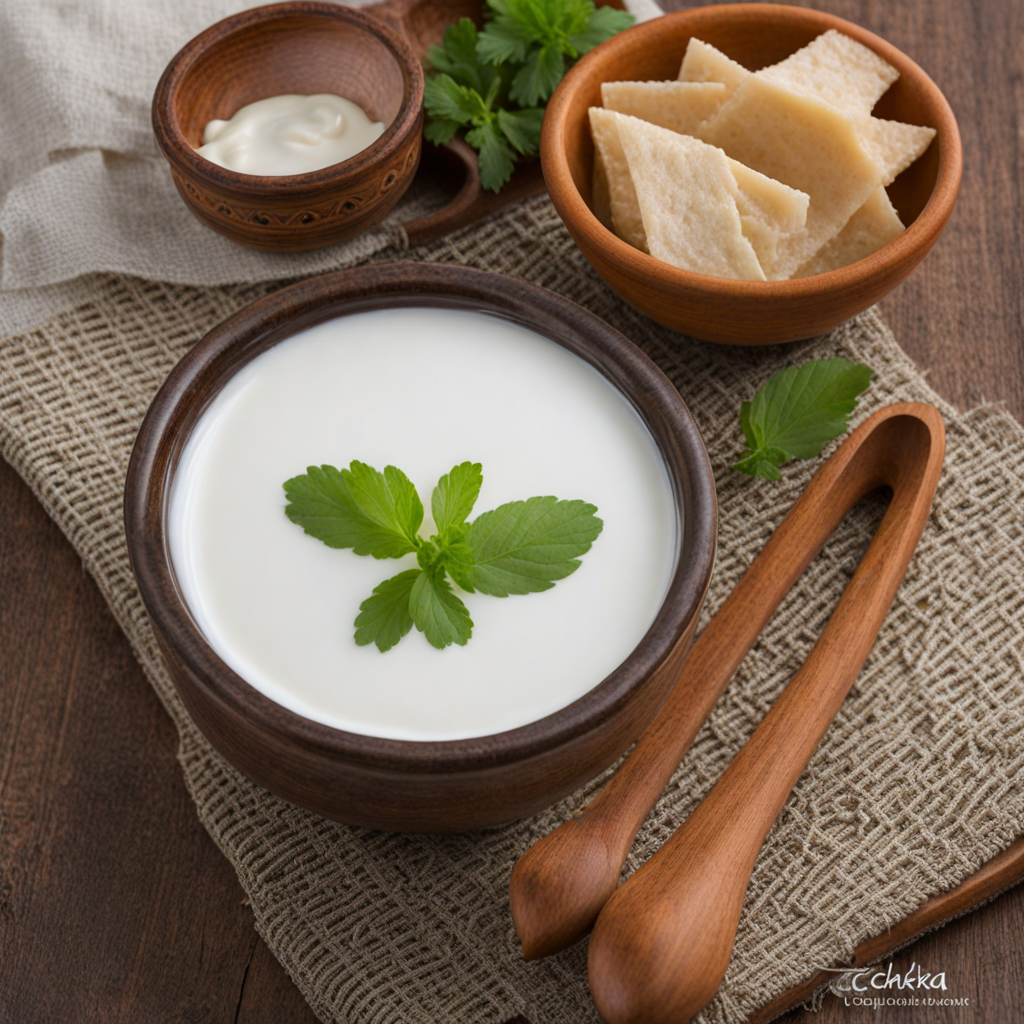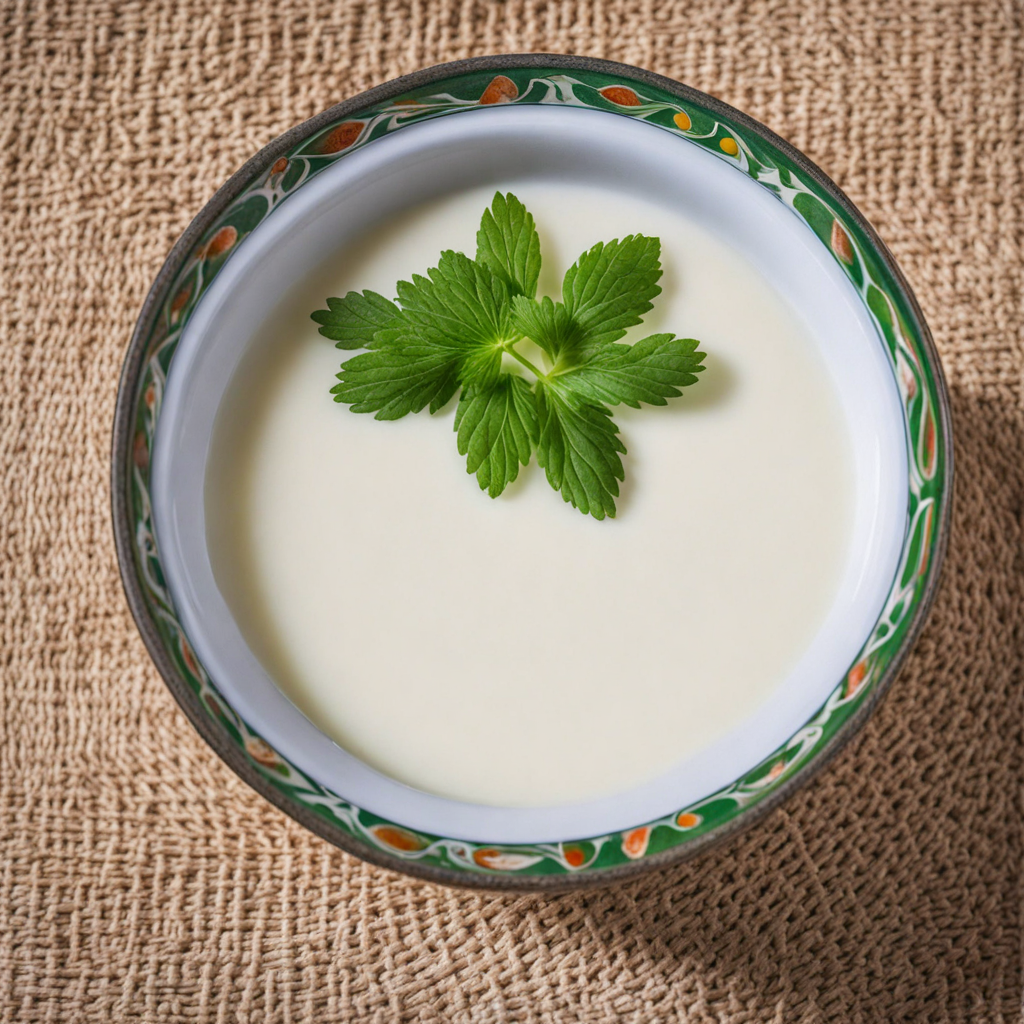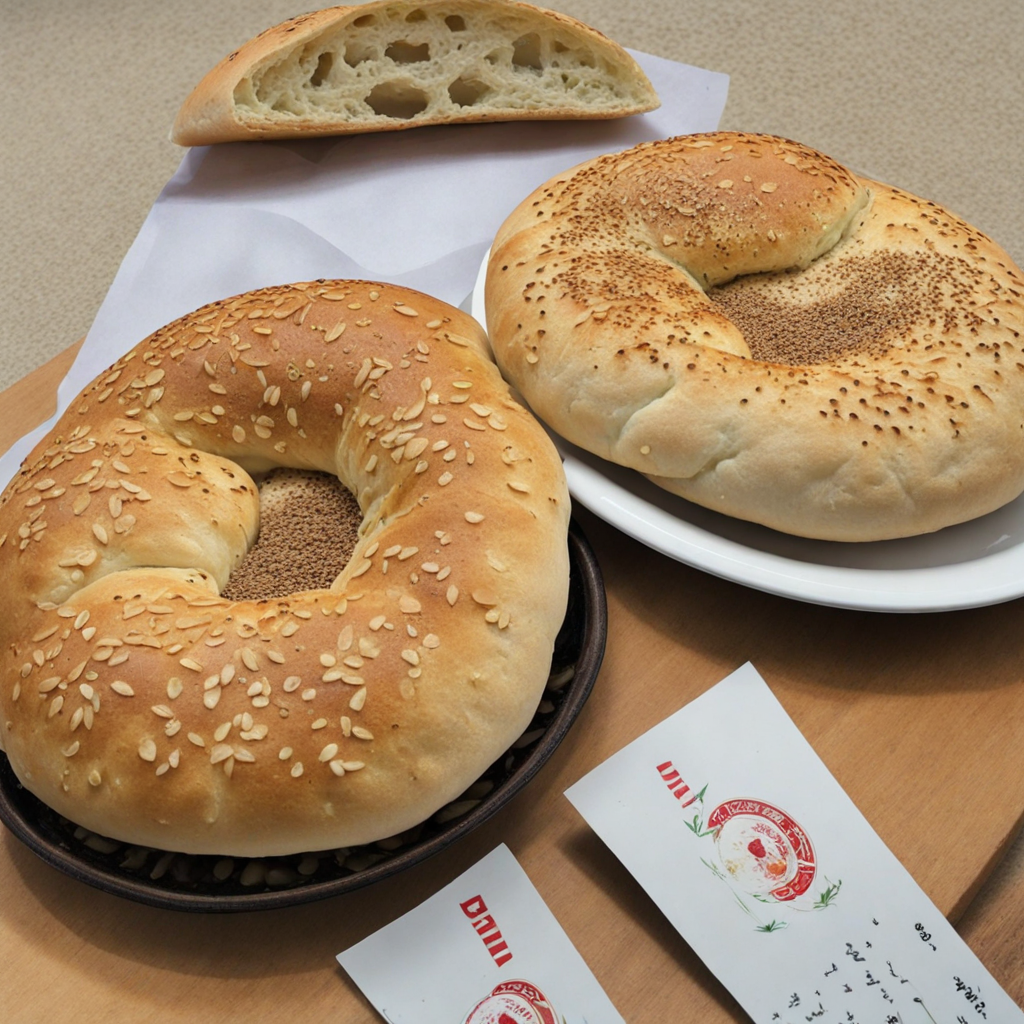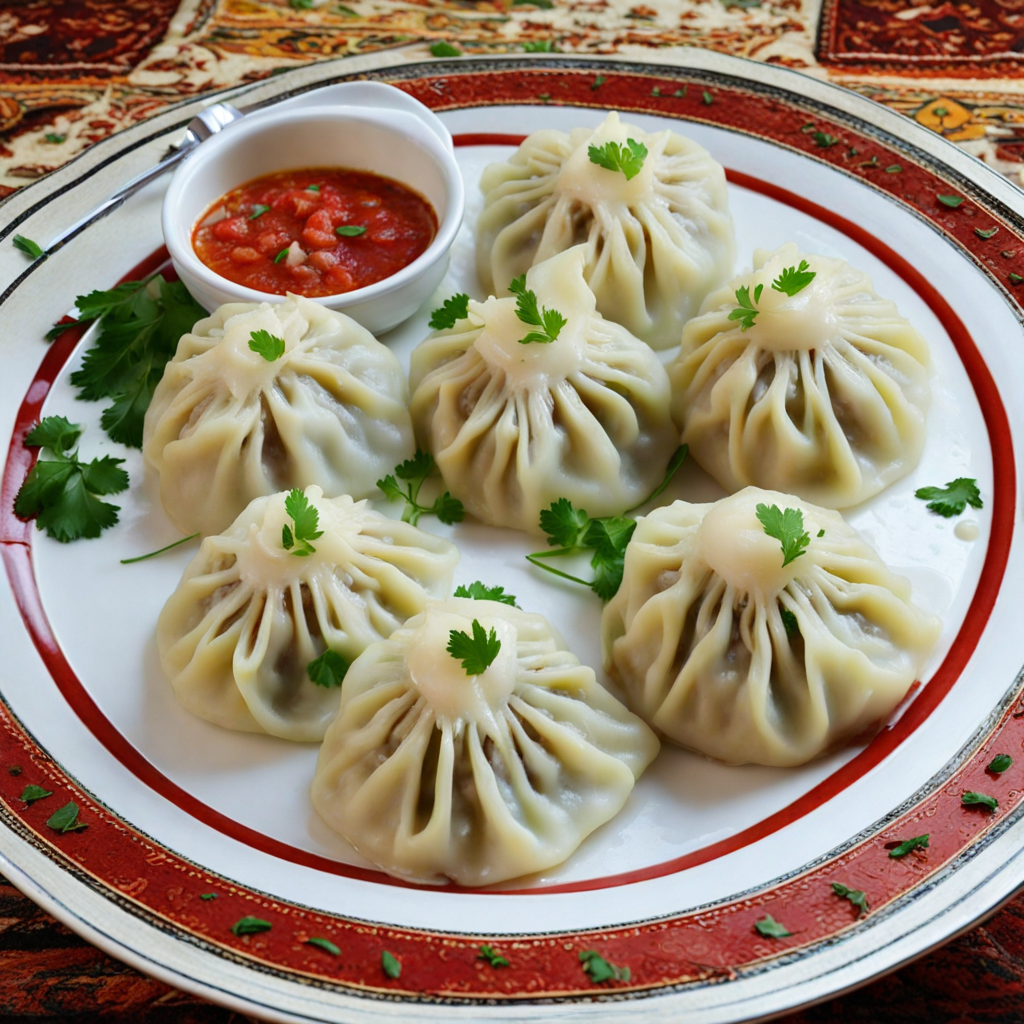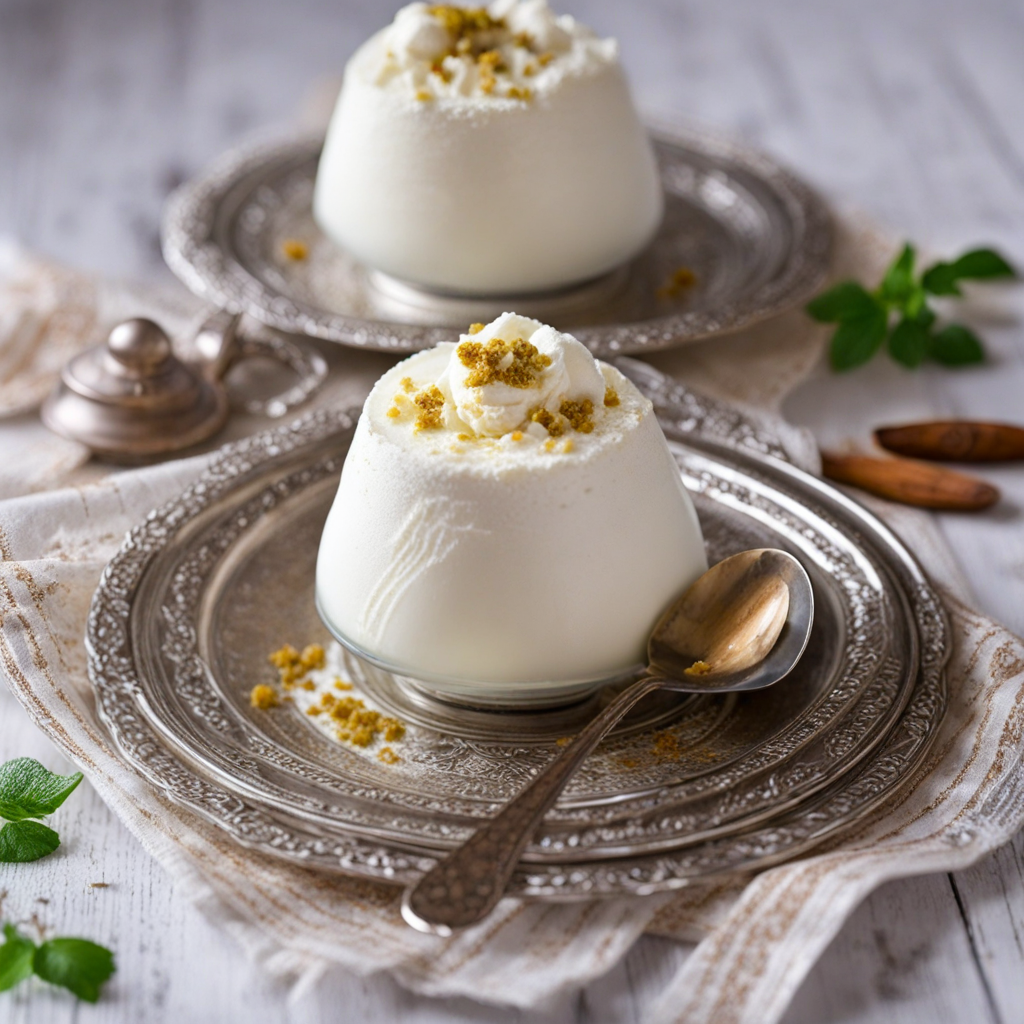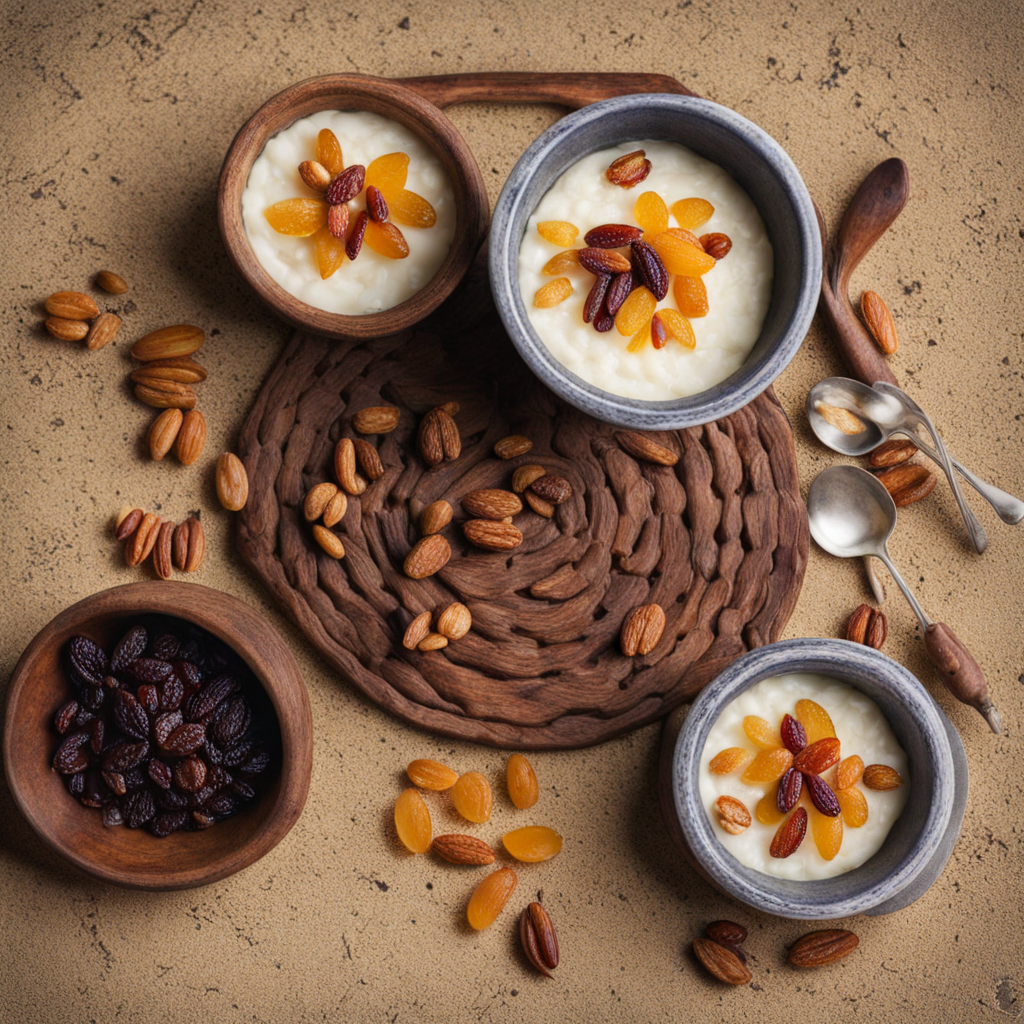Chakka
Chakka, a delightful dairy product from Tajikistan, offers a unique taste experience that reflects the rich culinary traditions of Central Asia. This traditional sour cream, made from fermented milk, has a thick, creamy texture that is both rich and slightly tangy. It is often enjoyed as a condiment, enhancing the flavors of various dishes, or simply as a refreshing accompaniment to bread. The subtle sourness of Chakka is the result of natural fermentation, giving it a depth of flavor that is both comforting and refreshing. In Tajik cuisine, Chakka is commonly served alongside a variety of meals, adding a creamy component that balances the spices and enhances the overall taste. It pairs beautifully with pilaf, grilled meats, and fresh vegetables, making it a versatile addition to any table. Beyond its role in savory dishes, Chakka can also be drizzled over desserts or mixed with fruits, showcasing its adaptability and the way it can elevate both sweet and savory flavors. For those looking to explore new tastes, Chakka is an exciting option that embodies the essence of Tajikistan's culinary heritage. Its distinctive flavor profile and creamy texture invite experimentation, whether used in traditional recipes or incorporated into modern dishes. By savoring Chakka, you can embark on a journey of flavor that highlights the natural ingredients and time-honored practices of this beautiful region.
How It Became This Dish
The History of Чакка: A Culinary Gem of Tajikistan Nestled in the heart of Central Asia, Tajikistan boasts a rich tapestry of culture and tradition, deeply intertwined with its culinary history. Among its gastronomic treasures is Чакка (chakka), a traditional dairy product that reflects the country’s pastoral heritage and the resilience of its people. This versatile food item, often compared to yogurt or sour cream, has evolved through centuries, serving not only as a staple in Tajik homes but also as a symbol of community and hospitality. Origins of Чакка The roots of Чакка can be traced back to the nomadic lifestyles of the Central Asian peoples, where pastoralism was essential for survival. The inhabitants of the mountainous regions of Tajikistan relied heavily on livestock, particularly sheep and goats, for their dairy needs. The practice of fermenting milk into various forms has ancient origins, dating back thousands of years, as a means of preservation and nutrition. In Tajik culture, dairy products have always played a significant role, with Чакка emerging as a favorite due to its unique taste and texture. The process of making Чакка is relatively straightforward: fresh milk is left to ferment naturally, allowing lactic acid bacteria to thrive. This fermentation process not only thickens the milk but also imparts a tangy flavor. The result is a creamy, slightly sour product that can either be consumed fresh or used in a variety of dishes. Cultural Significance Чакка holds a special place in Tajik culinary customs and social life. It is often served at festive gatherings, weddings, and family celebrations, symbolizing abundance and hospitality. In Tajikistan, offering Чакка to guests is a gesture of warmth and respect, embodying the cultural ethos of treating visitors with the utmost care. The dish is not merely a food item; it represents a connection to the land and the seasonal rhythms of pastoral life. For many Tajiks, the production of Чакка is a communal activity, often involving family members working together to churn milk into this delightful dairy product. The act of making Чакка is steeped in tradition, passed down through generations, with each family possibly possessing its unique recipe or method that reflects local environmental factors and personal tastes. In addition to its role in hospitality, Чакка also holds nutritional significance. Rich in probiotics, it supports digestive health and is often consumed as part of a balanced diet. It can be paired with bread, served alongside rice dishes, or used as a topping for savory pastries, making it a versatile addition to the Tajik table. Development Over Time As Tajikistan navigated through various historical epochs, from the Silk Road era to the Soviet period, the role of Чакка evolved. During the Silk Road’s zenith, Tajikistan became a melting pot of cultures, trade, and culinary influences. As merchants traveled through the region, they exchanged not only goods but also recipes, introducing new flavors and techniques to the local cuisine. However, traditional foods like Чакка remained largely unchanged, symbolizing a cultural continuity that stood resilient amid external influences. The Soviet era brought about significant changes to agricultural practices and food production in Tajikistan. The collectivization of agriculture altered the landscape of dairy farming, impacting the methods of milk production and the availability of traditional products like Чакка. Despite these changes, the Tajik people maintained a strong connection to their culinary roots. Many families continued to produce Чакка at home, ensuring that traditional practices endured even under the pressures of modernization. In the post-Soviet period, as Tajikistan regained its independence in the early 1990s, there was a resurgence of interest in traditional foods, including Чакка. This revival was fueled by a growing recognition of the importance of cultural heritage and the desire to preserve local culinary practices. Markets began to feature locally produced Чакка alongside other traditional foods, and it became a symbol of national identity. Modern Interpretations and Global Reach In the 21st century, Чакка has found its way beyond the borders of Tajikistan, captivating the palates of food enthusiasts around the world. The global interest in health and wellness has reignited a fascination with fermented foods, positioning Чакка as an attractive option for health-conscious consumers. Its probiotic properties and creamy texture have made it a popular ingredient in various recipes, appealing to both traditionalists and modern culinary innovators. Today, Чакка is often featured in fusion cuisine, where it is used in dishes that blend Tajik flavors with international techniques. Chefs experiment with Чакка in salads, spreads, and desserts, showcasing its versatility while paying homage to its roots. The rise of social media and food blogging has further amplified its presence, with images of Чакка adorning plates on Instagram and culinary websites, inviting new audiences to explore Tajik cuisine. Moreover, as Tajik diaspora communities grow worldwide, they carry with them the traditions of their homeland, including the cherished practice of making Чакка. This has led to the emergence of small-scale artisan producers in various countries, who seek to replicate the traditional methods of making this dairy delight, thereby keeping the culinary heritage alive. Conclusion Чакка is more than just a dairy product; it embodies the spirit of Tajikistan itself—a testament to the endurance of tradition amidst change. Rooted in the practices of nomadic pastoralists, it has evolved over centuries to become a beloved staple in Tajik cuisine. Its cultural significance as a symbol of hospitality, community, and nutritional sustenance makes it an integral part of the Tajik identity. As the world continues to embrace diverse culinary traditions, Чакка stands poised to share its rich history and unique flavors with a global audience. In every scoop of this creamy delight, one can taste the stories of generations, the beauty of Tajik culture, and the enduring connection between food and community. Thus, Чакка not only nourishes the body but also feeds the soul, reminding us of our shared humanity through the simple act of breaking bread—or in this case, sharing a bowl of creamy, tangy goodness.
You may like
Discover local flavors from Tajikistan


